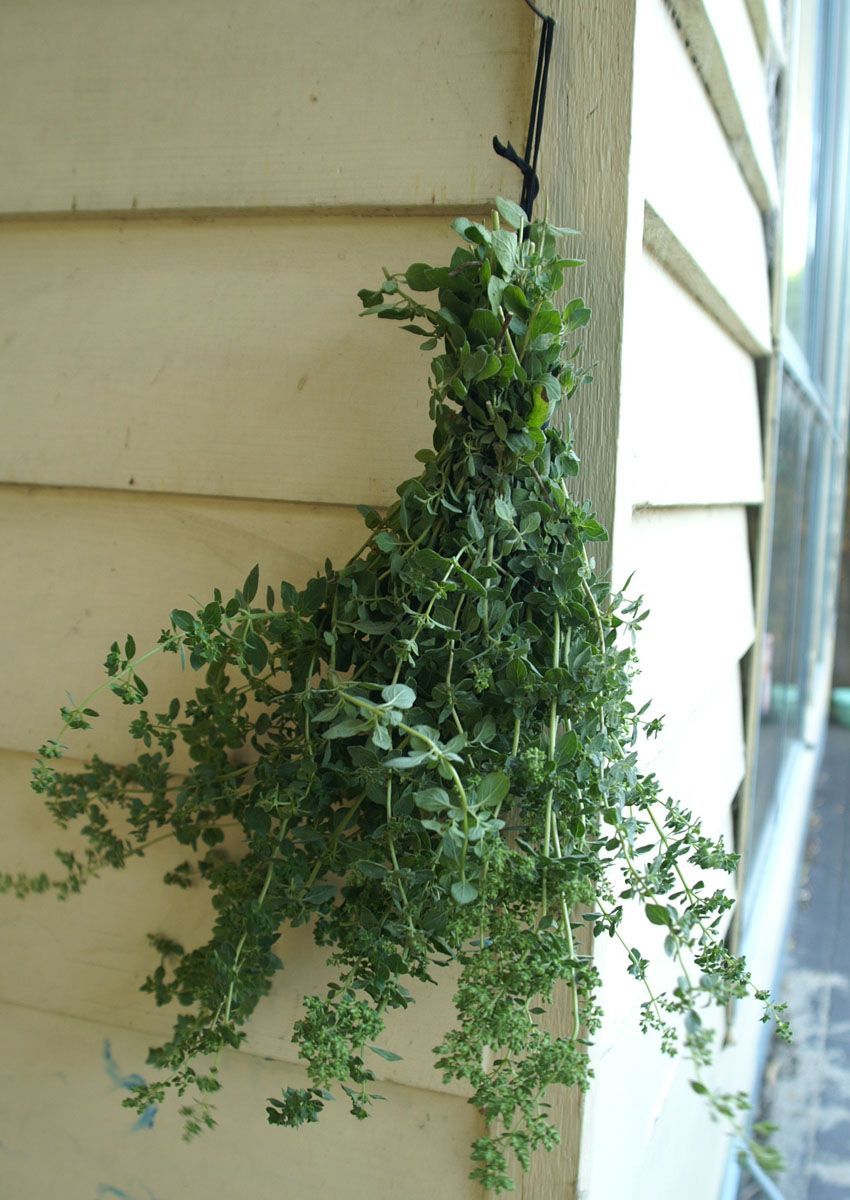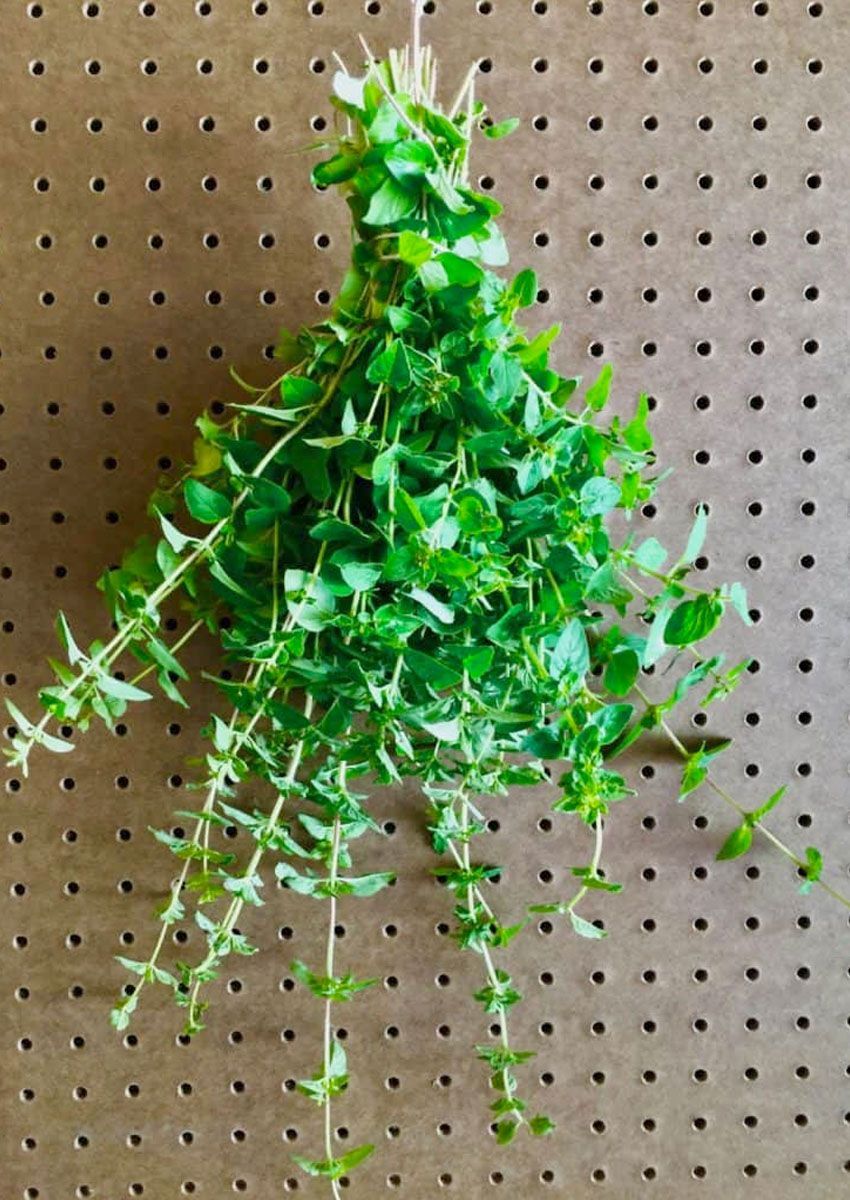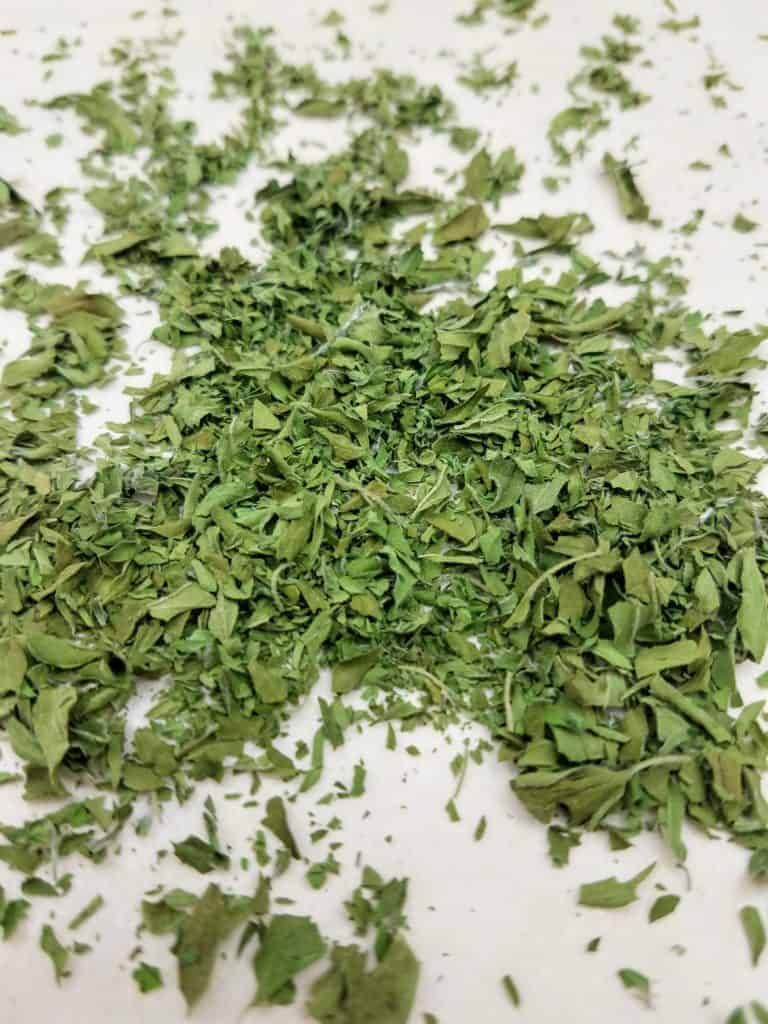Our recommendations are made independently. We may receive commissions from purchases made via our links.
How to Dry Oregano
Have fresh oregano in your house and want to keep them around for longer than a week? You can learn how to dry oregano in this guide.
Though oregano is one of the most important herbs to keep in your kitchen, its short shelf life can be problematic. A good solution for this is to learn how to dry oregano.
Dried oregano — like every other dried herb — lasts far longer in storage. For fresh oregano, the shelf life can be counted in days. In contrast, dried oregano can be kept around in the pantry for months, even years.
(Oregano can dry excellently, retaining most of its flavor and aroma afterward.)
Here’s how you can dry this native Mediterranean herb from the comfort of your home.
The Best Ways to Dry Oregano
We will show you three different methods for drying oregano in today’s guide: natural drying, in the oven, and in the microwave.
Natural drying simply means leaving your herb hanging somewhere cool, dry, and well-ventilated. After a while, the herb will dry out on its own. This is the preferred method for people who like to do things the ‘traditional way’. Plus, because it doesn’t require any expensive equipment, it’s less costly, too.

The disadvantages of this method are time and the weather. Each bouquet of oregano will need up to a full week to dry. Furthermore, you cannot use this method if you live somewhere that is humid. High humidity will cause the oregano to decay and turn moldy sooner than drying out.
Drying oregano in the oven is our preferred method. It provides the best balance between time and complexity (which there is very little of).
One bunch of oregano will only need an hour to fully dry in the oven. The steps are simple. All you need to do is to turn a few knobs and watch the oregano dry out.
If you’re short on time or you don’t have an oven, the microwave is a decent alternative. It is the quickest of the three methods in this guide, needing only a few minutes to dry out the herb. However, because of its intense heat, you will have to be on high alert at all times. If you’re not careful and ‘overcook’ the herb, the leaves will burn.
How Do You Dry Oregano Leaves
1. Dry Oregano Leaves Naturally
If you harvest your own oregano right from the garden and you don’t use any chemicals, you can dry the oregano without washing. Just give it a few good shakes to remove any loose dirt that’s still stuck to the leaves.
On the other hand, if you purchase oregano from the store, you should wash it just in case. Run the oregano underneath cool running water. scrub it gently with your fingers to remove any lingering dirt.
Dry carefully with a towel before proceeding.
When everything’s ready, gather all of your oregano plants and tie them together. Use a few cotton strings to tie their stems together in a bouquet.
Hang the bouquet somewhere cool, dry, well-ventilated, and away from direct sunlight. Ventilation is the most important part here because air movement encourages drying.
If you don’t know where to start, an open window, the balcony, the foyer, or the patio will do.

Leave the bouquet to dry for about a week. Every two or three days, turn the bouquet and expose the other side of it to the wind. This ensures even drying throughout.
The bouquet will be ready once the oregano leaves have become dry and brittle. The stems of the plants ought to be stiff, too.
Remove the leaves from the plants by pinching the stem end and dragging upward.
You can either store the leaves whole or crush the leaves with a mortar and pestle.
Either way, store the dried oregano in an airtight glass jar and stow it away in your pantry. It should last for 2 to 3 years. Nonetheless, the intensity of the flavor and aroma decreases substantially over time. It’s recommended to use it all within the span of a year.
Natural drying in this manner isn’t specific to oregano. It can be used to dry other herbs and spices, the most notable of which is the humble pepper. You can find out more about how to dry peppers on a string in a separate guide on HealthyRecipes101.
2. In the Oven
Preheat your oven to the lowest temperature available. Depending on the model, this will range between 170°F to 200°F. The most optimal drying temperatures are between 170°F and 180°F. But if your oven only goes down to 200°F, it’s fine, too. Just keep a closer eye on the herb to prevent burning.
Wash and prepare the oregano in the same manner as instructed above while the oven is preheating.
When the oven is up to temperature, take out a baking tray and line the bottom with parchment paper. Arrange your fresh oregano leaves on top. Be sure to leave plenty of space between each leaf.
Put the tray into the oven and bake for 1 hour.
When the timer rings, the leaves should be adequately dried. You can check by crumbling a leaf in your hand. If it easily comes apart, it’s done.

In case you’re not satisfied with the result, pop the tray back into the oven and bake for an extra 5 minutes.
What to do next will be up to you: store the leaves as they are, or grind down into smaller pieces. Place the dried oregano in a glass jar and store in your spice drawer or pantry.
What Else Can You Dry With This Method?
Oven-drying is the universal drying method. If you read our other drying guides, you will see that many of them also feature drying in the oven. Its low, stable heat can dry out anything if you give it enough time.
The steps to dry basil in the oven are basically the same as are the steps to dry parsley.
Not just herbs, the oven is also a key component in our guide to drying orange slices and citruses, too.
3. In the Microwave
Wash and prepare the oregano as normal.
Take out a microwave-safe plate. Arrange the oregano leaves on top. Zap in the microwave at low power in 30-second bursts. Turn the leaves over after each burst.
Like we mentioned earlier, because the heat of the microwave is very intense, watch the oregano carefully to prevent burning.
It should take 2 to 3 minutes for the oregano leaves to fully dry. Once they do, remove the oregano from the microwave, crush them if you want, and store in a glass jar.

What Else Can You Dry With This Method?
The microwave — just like the oven — is a highly versatile drying tool. It is used extensively in food drying and can be employed to dry herbs, vegetables, fruits, and berries.
Though, admittedly, it’s not the best tool for the job due to its intense heat, it is a viable option nonetheless.
In our guide on how to dry thyme, the microwave was one of several methods that we introduced. You can also find it in the article on drying cilantro at home.
It’s also possible to zap the moisture out of vegetables with the microwave, as demonstrated in our best way to dry mushrooms article. Berries aren’t much of a challenge, too, as seen in the how to dry cranberries guide.
Conclusion
That’s everything you need to know about how to dry oregano leaves!
All in all, it’s not very difficult and doesn’t take a lot of effort. The work pays dividends, however, since you will have a year-round supply of the herb in your home.
Would you like to read a few more drying guides for other herbs and food? Here are some of our best articles:
- Best way to Dry Rosemary: the special citrusy flavor and woody aroma of rosemary has made it one of the most popular herbs in the world. It doesn’t last long fresh, so if you want to keep it around, drying is the way to go. You can read about all of the best methods to dry rosemary in this guide.
- How to Dry Mint: mint leaves are quite versatile. Add them to tea and they can settle an upset stomach. You can take advantage of its natural peppery spice and refreshing aroma by using it in different sauces and dishes, too. Dry mint can be kept for longer than fresh while retaining a great deal of the original flavor and scent. Learn the ins-and-outs of mint drying in this article.
- How to Dry Dill: dill has a citrusy flavor and an earthy, grass-like undertone. Though it’s not as versatile as, say, basil or parsley, it’s still used in a wide variety of recipes. You can see exactly how to dry dill here.





